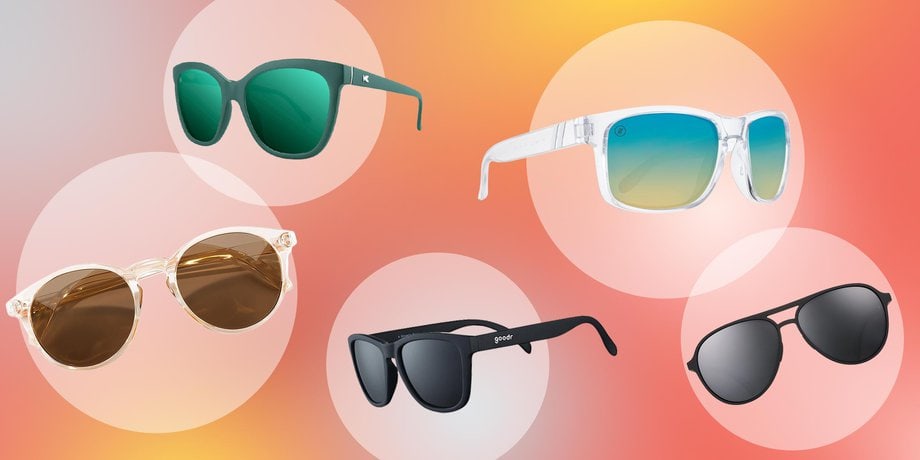How to Choose the Right Sunglasses for Eye Protection

The selection of suitable sunglasses for eye protection is a critical consideration. This article aims to provide guidance on the process of selecting sunglasses that effectively safeguard the eyes.
The significance of eye protection will be explored, with an emphasis on the identification of harmful ultraviolet (UV) rays. Moreover, the article will discuss the importance of choosing sunglasses with appropriate UV protection, as well as the influence of lens colors and tints on various activities.
The evaluation of frame styles for comfort and durability, along with additional features that enhance eye protection, will also be discussed.
Key Takeaways
- Sunglasses are essential for protecting the eyes from harmful UV exposure, which can lead to eye problems and skin cancer.
- It is important to choose sunglasses that block both UVA and UVB rays to prevent long-term damage.
- Lens color options, such as gray and brown, can enhance vision and reduce glare.
- The choice between polarized and non-polarized lenses depends on individual preferences, activities, and budget.
Understanding the Importance of Eye Protection
Understanding the importance of eye protection is essential in making informed decisions when selecting sunglasses. Wearing sunglasses is not just a fashion statement; it plays a crucial role in safeguarding our eyes from harmful effects of excessive UV exposure.
The sun emits ultraviolet (UV) radiation, which can cause various eye problems, such as cataracts, macular degeneration, and photokeratitis. Prolonged exposure to UV rays can also lead to the development of skin cancer around the eyes. Sunglasses with proper UV protection can significantly reduce the risk of these eye conditions.
They act as a shield, blocking out the harmful UV rays and preventing them from reaching the delicate tissues of the eyes. Therefore, understanding the importance of wearing sunglasses should be a priority for everyone to ensure long-term eye health.
Identifying Harmful UV Rays
Identifying harmful ultraviolet (UV) rays can be achieved by examining the wavelength range of UVA, UVB, and UVC radiation. These rays are invisible to the naked eye but can cause significant damage to the skin and eyes.
Common misconceptions about UV rays include the belief that they are only harmful on sunny days or that they are blocked completely by clouds. In reality, UV rays can penetrate clouds and cause damage even on overcast days.
Long-term exposure to UV radiation can lead to various health problems, such as cataracts, macular degeneration, and skin cancer. It is essential to protect oneself from these harmful rays by wearing appropriate sunglasses that block both UVA and UVB rays.
Regular use of sunglasses can help prevent the long-term effects of UV radiation on the eyes.
Choosing Sunglasses With Proper UV Protection
This discussion will focus on three key points when choosing sunglasses for proper UV protection:
- UV rating importance: The UV rating of sunglasses is crucial in determining the level of protection they provide against harmful UV rays.
- Lens color options: Lens color options also play a role in enhancing vision and reducing glare.
- Difference between polarized and non-polarized lenses: The choice between polarized and non-polarized lenses affects the ability to eliminate reflected light and improve visual clarity.
UV Rating Importance
The UV rating of sunglasses is a crucial factor to consider when selecting eyewear for optimal eye protection. The UV rating standards determine the level of protection against harmful ultraviolet (UV) radiation. Sunglasses with a high UV rating provide greater protection, reducing the risk of eye damage caused by prolonged exposure to UV rays.
The benefits of UV protection include:
- Prevention of eye conditions: UV radiation can lead to various eye conditions such as cataracts, macular degeneration, and pterygium. Sunglasses with a high UV rating can help prevent or delay the onset of these conditions.
- Reduced risk of sunburn: UV radiation can cause sunburn on the surface of the eye, known as photokeratitis. Sunglasses with a high UV rating can effectively block UV rays, reducing the risk of sunburn.
- Protection for sensitive areas: The skin around the eyes is delicate and more susceptible to UV damage. Sunglasses with a high UV rating can provide additional protection to these sensitive areas.
Considering the UV rating when selecting sunglasses is essential for ensuring adequate eye protection and reducing the risk of UV-related eye damage.
Lens Color Options
Lens color options play a significant role in determining the level of visible light transmission and glare reduction provided by sunglasses. The choice of lens color has both functional and aesthetic considerations.
Sunglasses trends have shown a wide range of lens colors being used, including classic options such as gray, brown, and green, as well as more unconventional choices like blue, pink, and purple. Each lens color has its own advantages and disadvantages.
For example, gray lenses provide the most natural color perception and reduce brightness without distorting colors, making them suitable for everyday use. On the other hand, brown lenses enhance contrast and depth perception, making them ideal for outdoor activities.
Lens material options also influence the effectiveness of sunglasses in protecting the eyes from harmful UV rays and glare. Polycarbonate lenses, for instance, are lightweight, impact-resistant, and provide excellent UV protection, while glass lenses offer superior optical clarity but are heavier and more prone to breakage.
Therefore, when choosing sunglasses, it is important to consider both the lens color options and the lens material options to ensure optimal eye protection and visual comfort.
Polarized Vs. Non-Polarized
When choosing sunglasses for eye protection, it is important to consider whether to opt for polarized or non-polarized lenses.
Polarized lenses have become increasingly popular due to their numerous benefits, including:
- Reduced glare: Polarized lenses effectively block horizontal light waves, reducing glare from reflective surfaces such as water, snow, and glass.
- Enhanced clarity: By minimizing glare, polarized lenses provide clearer vision, improving visual comfort and reducing eye strain.
- Better color perception: These lenses can enhance color contrast and depth perception, making objects appear more vibrant and defined.
However, it is worth noting that non-polarized lenses also have their advantages, including:
- Wider field of vision: Non-polarized lenses do not reduce the visibility of LCD screens, making them ideal for driving or using digital devices.
- Lower cost: Non-polarized sunglasses are generally more affordable compared to their polarized counterparts.
- Less impact on visual perception: Some individuals may find that non-polarized lenses cause less distortion or alteration of their natural visual perception.
When deciding between polarized and non-polarized lenses, it is essential to consider individual preferences, activities, and budget.
Considering Lens Colors and Tints for Specific Activities
When selecting sunglasses for specific activities, it is important to consider the appropriate lens colors and tints. Lens material options and impact resistance considerations play a crucial role in ensuring eye protection.
There are various lens materials available, such as glass, plastic, and polycarbonate. Glass lenses offer excellent optical clarity but are heavier and more prone to breakage. Plastic lenses are lightweight and shatter-resistant but may not provide the same level of visual acuity. Polycarbonate lenses are highly impact resistant, making them ideal for sports and outdoor activities.
Lens colors and tints also serve different purposes. For instance, gray lenses reduce brightness without distorting colors, while brown lenses enhance contrast and depth perception. Yellow and orange lenses are suitable for low-light conditions, enhancing visibility.
It is important to choose lens colors and tints that align with the specific activity and lighting conditions to ensure optimal eye protection.
Evaluating Frame Styles for Comfort and Durability
Frame styles for sunglasses should be evaluated based on their comfort and durability to ensure a satisfactory wearing experience. When choosing the right frame style, it is important to consider the following factors:
- Evaluating frame materials: Different frame materials offer varying levels of comfort and durability. Common materials include plastic, metal, and acetate. Plastic frames are lightweight and affordable, but may not be as durable as metal frames. Metal frames, on the other hand, are sturdy and long-lasting, but can be heavier. Acetate frames provide a combination of comfort and durability, making them a popular choice.
- Finding the right fit: Sunglasses should fit snugly on the face without causing any discomfort or pressure points. The frame should not slide down the nose or pinch the temples. It is essential to consider the size and shape of the frame, as well as the bridge width and temple length, to ensure a proper fit.
Additional Features to Enhance Eye Protection
When choosing sunglasses for eye protection, it is important to consider additional features that can enhance the level of protection provided. One such feature is the ability to block blue light. Blue light is emitted by electronic devices and can cause eye strain and fatigue. Sunglasses with blue light blocking capabilities can help reduce these symptoms and improve visual comfort.
Another important feature to consider is impact resistance. Sunglasses with high impact resistance are less likely to shatter or break upon impact, providing an added layer of protection for the eyes. This is particularly important for individuals engaged in activities that carry a higher risk of eye injury, such as sports or construction work.
Frequently Asked Questions
What Are Some Common Eye Conditions That Can Be Caused by Not Wearing Sunglasses?
Common eye conditions that can be caused by not wearing sunglasses include cataracts and macular degeneration. These conditions are associated with prolonged exposure to harmful ultraviolet (UV) radiation from the sun.
Can Sunglasses Protect Against Blue Light From Digital Screens?
Sunglasses with a blue light filter have the potential to protect against the harmful effects of blue light emitted from digital screens. However, further research is needed to determine their effectiveness in reducing eye strain and other related symptoms.
How Often Should Sunglasses Be Replaced for Optimal Eye Protection?
In considering the question of when to replace sunglasses for optimal eye protection, it is important to identify the signs of worn-out sunglasses. These signs may include scratched lenses, loose or broken frames, and diminished UV protection.
Can Sunglasses Be Worn Indoors for Added Eye Protection?
Sunglasses can provide added eye protection when worn indoors, as they can help reduce exposure to harmful UV rays. Additionally, sunglasses with polarized lenses may offer benefits such as reducing glare and potentially alleviating migraines and headaches.
Are There Any Specific Certifications or Standards to Look for When Choosing Sunglasses for Eye Protection?
When choosing sunglasses for eye protection, it is essential to consider certifications or standards. These certifications ensure the importance of UV protection in sunglasses and the effects of different lens colors on eye protection.








